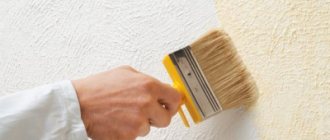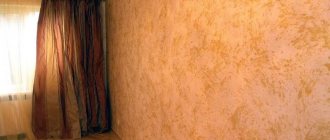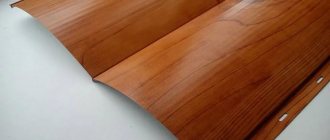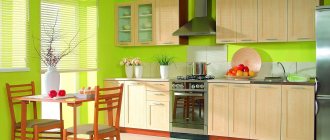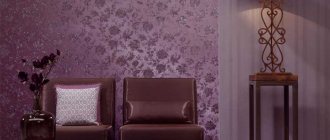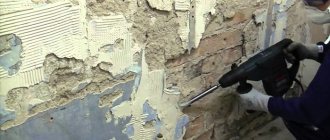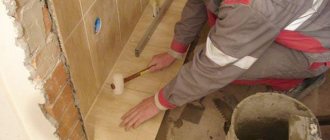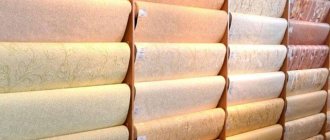Marble in the interior
It has a rich palette, polishes well, and has a unique pattern. Therefore, from ancient times to the present day, marble has been used in interior design for:
- Design of internal and external walls.
- Finishing of plinths, staircase steps, door and window openings.
- Floor coverings.
- Design of fireplaces, decorative hearths.
- Finishing of swimming pools, saunas, bathrooms.
- Manufacturing of countertops and kitchen aprons.
- Production of furniture, interior parts (columns, plinths, statues, fountains).
Hall
Marble sink
marble sink - regardless of color and shape - will always be an exquisite decoration of the entire room. It can have a completely minimalist shape and be beautiful in its simplicity.
However, if you are looking for something unique, something that attracts attention, it would be good to try a washbasin model whose function will be taken over by the background, because it will first of all represent a fantastic decoration.
What original marble sinks can be found in stores?
- Washbasins in shades of white, grey, blue and green,
- Washbasins inspired by nature - in the shape of a shell or a drop,
- Bowl-shaped marble washbasins
- Cylindrical and pedestal sinks,
- A washbasin whose design remains raw and unpolished.
Advantages
Natural natural material. With minimal processing (sawing, polishing), marble has many advantages:
- Durability. Serves for centuries. It is difficult to damage. The appearance and design are preserved despite sunlight, frost, and heat.
- Strength. Marble is heavy and hard. Holds polish very well. Abrasion and significant mechanical loads (when laid on the floor) are not dangerous.
- Beauty. The material has a texture of one color or a combination of several. The number of colors is large. The whole spectrum - from black to white.
- Uniqueness of the view. The texture is created by nature accidentally. No two slabs are alike. This makes a room decorated with marble unique.
- Environmentally friendly. Harmless to humans and pets. Does not emit harmful fumes or radiation. Good dielectric.
- Compatible with all decor styles. Used for decoration in classical and modern styles. Empire and Renaissance do not shy away from this material.
Kitchen
How to attach marble wall panels
All rooms in the apartment can be chosen for marble cladding, but this type of finishing is more often used in the bathroom, bathhouse, and swimming pool. These are rooms with high humidity and temperature changes. Regardless of this, ease of use, aesthetic beauty, and durability are guaranteed.
Marble wall decoration
A classic interior, without marble, bringing sophistication to the room is difficult to imagine if you value the correctness of lines. In the hands of a master, the material plays with a variety of colors. A well-chosen masonry method and technology will highlight the shade of the stone.
How to make marbled walls with your own hands
Wall cladding can be done using two methods: wet and dry.
In order to use the first option, a wall is prepared. Contaminants are removed and the surface is leveled. The laying of marble slabs directly is carried out using a special adhesive mixture. Reinforcing clips are also purchased, which are inserted into the tile slots located at the upper end.
When placing marble on a surface, you need to be sure that the surface is reliable and strong, since the material is heavy.
Using the second option, an unprepared surface is used. A reinforcing frame consisting of horizontal and vertical guides is attached to the wall. If the marble is large in size, then studs are screwed into it. The holes for them can be made through or blind. After this, the panels are hung on the frame. In this case, there are no seams; the connection occurs in a “groove”, which makes it durable.
What materials can be replaced with marble?
This is expensive material.
Not everyone will be able to use it. But in order for the imitation to be attractive and of high quality, it is recommended to use Venetian plaster. This option is worthy of attention, because the resulting result pleases the eye with a unique appearance. To create an analogue, you need to perfectly level the wall surface and apply a primer. The main task is to correctly place layers of plaster of different colors, which are then skillfully mixed. This is the only way to get a surface that imitates marble.
You can use various plastic panels with a similar texture, which is much cheaper.
Application area
The material is used to decorate public and private houses. This stems from its decorative appearance, variety of varieties, and ease of processing.
The last thing is absolutely true - marble is easy to cut (with diamond discs) and polished. Individual elements such as cornices and medallions are fixed with stone glue and hidden pins.
Stair steps, hall floors, columns, fireplace portals are made of marble slabs. This stone is used for the production of decorative elements - statues, baguettes, furniture countertops. Finish the interiors of swimming pools, baths, saunas.
Bathroom
Average prices for materials and labor
The price of marble depends on the rock, the place of extraction and the size of the slab . The pattern and color of the material are important. The minimum price is from 500 rubles per sq.m., it will be a second-class material, the simplest, gray in color. This is used on the facades of banks and administrative buildings.
A first-class marble slab costs from 1,500 rubles per sq. m., on average the price tag is 5,000-7,000 rubles per sq. m., there are options more expensive from 10,000 rubles per sq. m. (black, pink, green). The country of extraction matters; Russian-made marble is cheaper.
Marble chips are cheaper, on average 2500 rubles/ton in dry form. Ready-made option from 800 RUR/sq m, average price 1200-1500 RUR/sq m.
Average price for installation work with marble:
| Type of work | Moscow and Moscow region, r/sq m | St. Petersburg and Leningrad Region, r/sq m | Krasnodar, r/sq m | Rostov-on-Don, r/sq m | Kazan, r/sq m |
| Cladding with natural stone | 1500 | 1400 | 1300 | 1300 | 1300 |
| Cladding with artificial stone | 1200 | 1000 | 900 | 900 | 800 |
The price depends on the complexity of the work and the value of the material.
Wall decoration
A simple process that requires accuracy, a lot of effort and time. If an amateur craftsman is not confident in his abilities, he should turn to professionals for help. If installation is incorrect, repeated repairs and loss of expensive material are inevitable. The process consists of two equivalent stages - preparation of surfaces, fastening of stone slabs.
Fireplace
Preparing walls for cladding
Preparing walls for installation of tiles consists of the following steps:
- Leveling surfaces. Removing plaster down to the brick or concrete base. Using a power tool and a hand hammer (mallet, chisel) remove irregularities - sagging mortar, protruding fasteners, seams. When working with tiles of small size and weight (about 30-40x30-40 cm width-height, 1-1.5 cm thickness), they can be mounted on a plasterboard base. It is installed according to the usual scheme.
Advice! When leveling walls with drywall, use a waterproof type.
- Strengthening. The finished plasterboard surface is covered with a solution, and a metal mesh is imprinted into it. It is covered with an even, thin layer of cement mortar. If the tiles are mounted on a brick wall, the mesh is installed directly on it. This strengthens and further smoothes the surface.
- Cleaning. After the solution has dried, the surface is treated with construction brushes, achieving a smooth surface. The resulting dust is removed with a construction vacuum cleaner.
- Padding. The finished flat wall is covered with soil. This facilitates fastening and protects the wall from the external environment.
Fireplace Hall
Wall mounting
There are three types of plate fastening:
- For cement mortar. Plastic or metal clips are attached to the wall. Blind holes are drilled in the stone slabs from the reverse side in appropriate places. The wall is covered with an even layer of cement mortar. The tiles are pressed to the plane and at the same time fixed with clips. After the first row, a second one is attached above it - so up to the ceiling. The amount of mortar on the wall must correspond to the type of masonry - with or without a seam. In the first case, a pigment is added to the solution to match the color of the stone.
- For stone glue. This method is the simplest and is suitable for small, lightweight marble tiles. Glue is applied to the wall and tiles. Then it is attached to the desired place. The glue hardens and the stone tiles hold firmly. Clips are not used.
- On separate metal fasteners. The method is the most labor-intensive and expensive, it allows you to install slabs of several square meters in area, up to 20 cm thick. It consists of installing a ventilated metal frame against the wall. Stone slabs are attached to it. Such fasteners relieve the load from adjacent elements and make the structure durable.
Bedroom
Surface preparation
Before finishing walls with marble slabs, surface preparation must be carried out. It should include the following types of work:
- surface leveling. This is done using drywall, plaster or cement mortar. However, drywall and plaster are used only when the slabs are light in weight. When choosing plaster, you should use two types - starting and finishing. After applying the leveling layer, you need to wait for it to dry completely;
- its further strengthening;
- cleaning the surface from dirt;
- priming with special means that increase the adhesion of the wall surface and the facing material.
Remember that proper surface preparation is the key to fast and high-quality further work.
Materials: analogues of marble
Despite all the advantages and attractiveness of marble, its high price discourages its use. Expensive material is replaced with affordable imitations. Three popular options:
- Plaster. They use Venetian. It is applied in several layers of different shades and colors, then they are mixed - manually forming a pattern that imitates stone. If the homeowner does not have experience with this type of plaster, it is worth hiring a professional. You need to buy high-quality plaster mixtures. This guarantees high quality results.
- Ceramic tile. There are many varieties of different price groups on the market. There are tiles for the floor and walls. Their installation is simple and accessible to a technician without experience. The main thing is to level the surface of the wall or floor well and apply the proper amount of glue.
Advice! Ceramic tiles often weigh as much as the marble tiles they imitate. Therefore, it is necessary to balance the strength of the mounting surface and the weight of the material. For reliability, high-quality glue and plastic mounting clips are used.
- PVC panels. The most budget-friendly and simplest finishing option. The panels are moisture resistant. They tolerate exposure to sunlight well. They are distinguished by their low weight. Installation involves fastening the panels with self-tapping screws to an aluminum frame. To design joints, transitions, corners, you can purchase various auxiliary elements on the market (f-profiles, adapters, corners, etc.).
Advice! If there is not enough marble for the entire room, do not try to imitate what is missing in any way. This devalues the decorative value of real stone. The interior will become tasteless.
Living room

